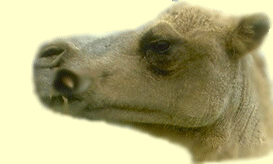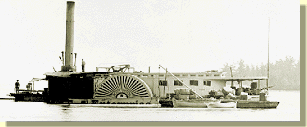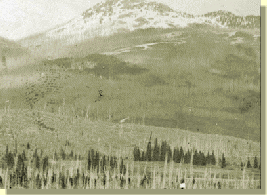More about those Camels

Camels
The camels that came into the Cariboo in May of 1862, and packed loads for the first time along the Fraser River canyon towards the Cariboo gold-fields were a two-humped variety originally from Bactria, an ancient kingdom in central Asia.
Canadian Geographic, Dec.1987-Jan.1988, pg.107.
A couple of months before, 23 of these Bactrian camels had been shipped from Arizona to San Francisco, and finally sailed to Victoria on the steamer Enterprise. They were then bought by a man named Calbreath of Victoria.
The camels were shipped to Port Douglas on a barge towed in by a sternwheeler called, The Flying Dutchman.

|
|
BC ARCHIVES A-00070 Wreck of Ss Enterprise, July 1885 |
It was assumed that camels could go six to 10 days without water and travel 50 to 70 kilometers a day with a 500-kilogram load.
In fact, few of these expectations were ever met.The camels never carried more than 300 kilograms, and the rocky paths of the Cariboo soon tore up their feet which were accustomed to soft desert sands.
This occured even after little booties made of canvas and rawhide were made for the camels' feet.
It is not yet known what happened to the other two camels, but the 21 survivors performed as best they could in the Cariboo.

|
|
BC ARCHIVES C-09532 Vegetation on the Cariboo Wagon Road |
The camels travelled for many hours without resting, and maintained their diet from the grasses and sages along the Cariboo Wagon Road.
The camels also faced many different fates during their stay in the Cariboo.
A miner named John Morris was passing by Quesnel Forks. He saw what he took to be a large grizzly bear and immediately blasted it with his rifle. After the animal toppled over, he and his companions soon discovered it to be one of Laumeister's camels with a big gaping hole in its side.
B.C. historian Judge Frederick William Holloway claims the last known camel died in 1905, although another claim suggests one or two lived on until 1910.



|
Last updated November 30, 1998. Produced by Carollyne Yardley Industrial Art Internet Group Ltd. © 1998-1999 |
